

10 hot questions

How smart are you really?
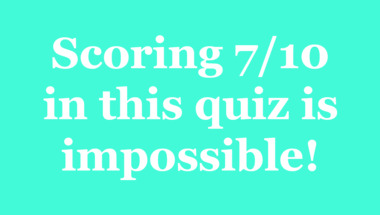
Are you ready?

Do you also love music from the 1960s?

10 mixed questions to challenge your knowledg..

Let us know your sorry score in the comments ..
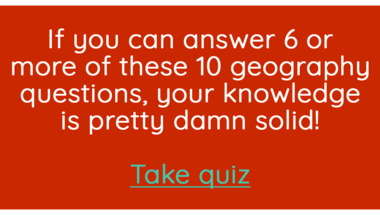
10 questions

10 mixed up questions
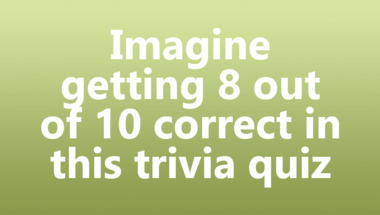
Let me know your score
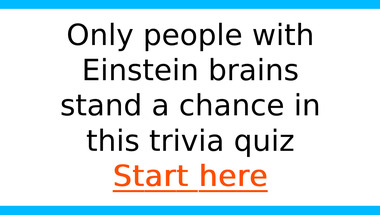
10 questions in mixed themes

How many of these famous songs do you remembe..

10 mixed up questions
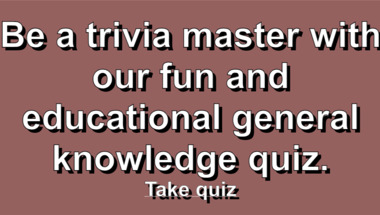
10 trivia questions for everyone
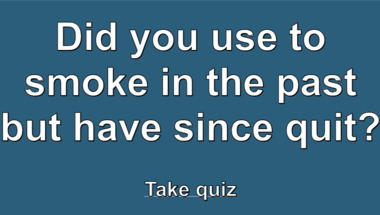
10 questions in mixed categories

10 mixed genereal questions
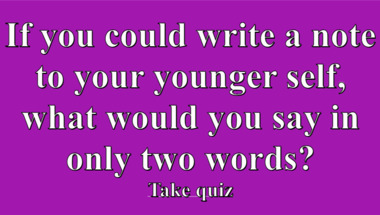
10 questions to test your knowledge
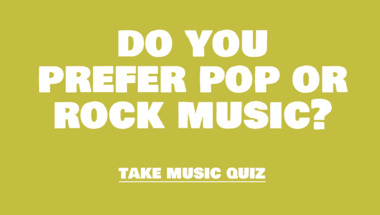
Example : The ____ Stones

We ask you 10 questions

10 questions
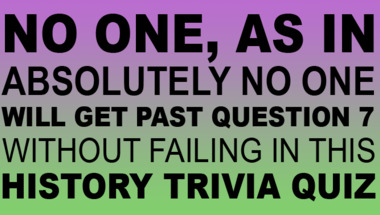
10 questions to measure your knowledge
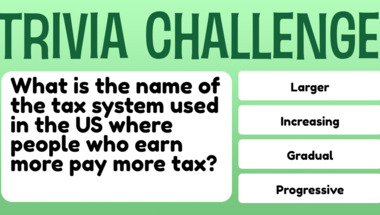
How many of these fantastic songs do you reme..

A captivating and amusing quiz that challenge..
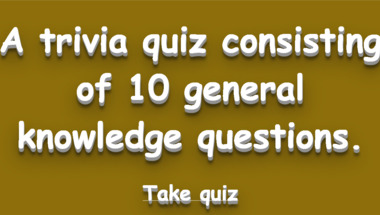
10 questions

Are you a knowledge genius?

We mixed up 10 good questions here

10 hot questions

Try and score 3/10

10 questions

10 fun questions

How many songs do you remember?

How smart are you really?

Click here for solution and a quiz

10 mixed questions

Is your IQ high enough for these questions?
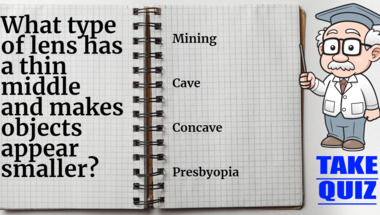
Here are ten questions for you to consider:

10 mixed questions

Test your memory: Can you recall these songs ..

10 random questions

10 questions to test your knowledge

Let's see how smart you really are!
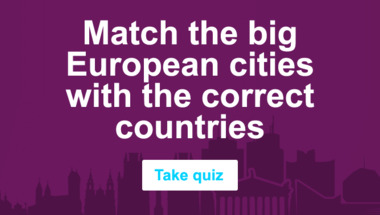
Let us know your score in the comment section

Did you pay attention in school?
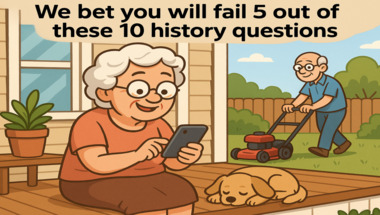
10 flavourful questions

Ten fun questions
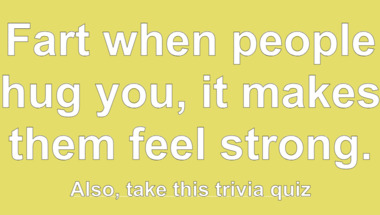
10 questions to answer
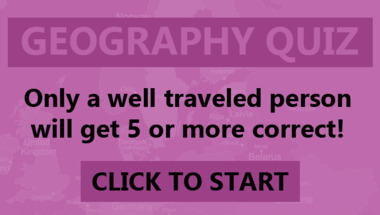
That last questions will make you stumble

10 random questions

10 artists to guess

How will you do?
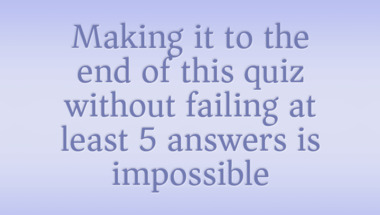
10 questions

Most people wont even get 7 out of 10 correct

10 challenging questions
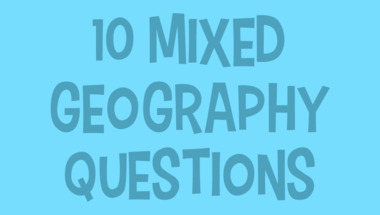
10 questions to answer

10 mixed questions

10 questions to test your knowledge

How many correct will you get?

How many of them will you answer correctly?
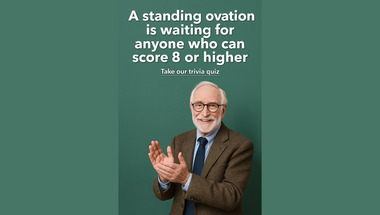
Let's see how smart you really are!

10 challenging questions for you

How many of the good old songs do you remembe..

10 mixed questions

Tell us the meaning of these 10 words
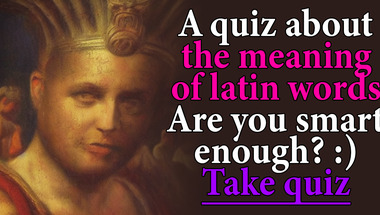
10 fun questions

Can you take it higher than 7/10 correct?
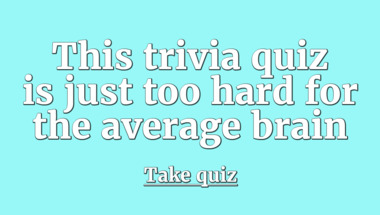
10 general knowledge questions
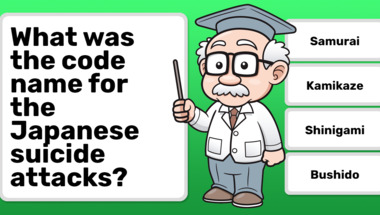
How many correct will you get?

How many correct will you get?

10 Songs. Can you guess them all?

10 questions
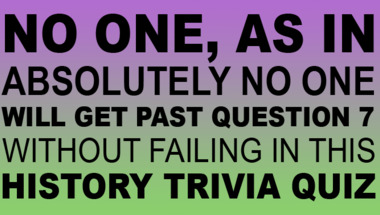
How many actors will you get right?

10 questions in mixed categories
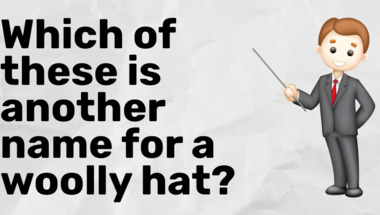
10 Hard Questions
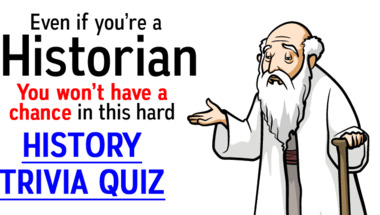
Have fun!
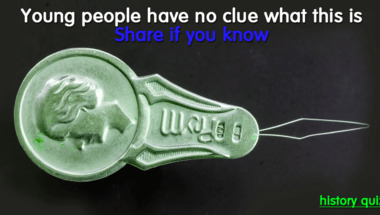
10 questions to test your knowledge
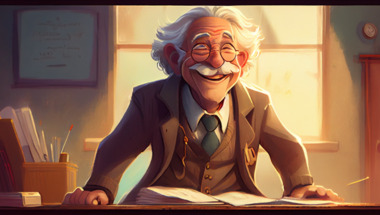
10 questions

10 mixed questions

10 Questions

10 songs to guess

Are you smart enough for this one?

10 questions

Please take 10 seconds to tell me your score ..

Let us see how smart you really are!
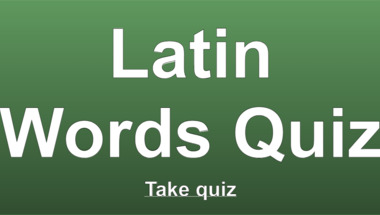
10 general knowledge questions

10 interesting questions

Are you up for a quiz?

10 mixed trivia questions

A score above 4/10 is amazing

10 mixed questions

10 questions to test your knowledge

Expect 4 out of 10 correct answers
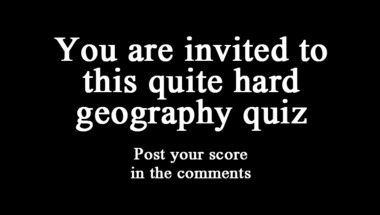
How many correct will you get?

10 quite hard questions

High IQ questions

How many correct will you get?
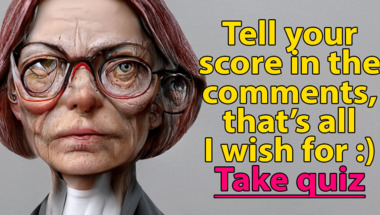
10 mixed up questions

10 questions in mixed categories

Presented below are 10 questions of various t..
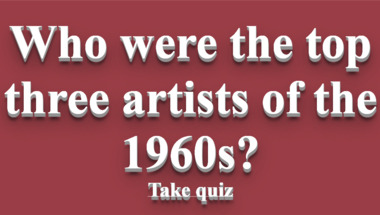
Experts only please

Click here to have fun
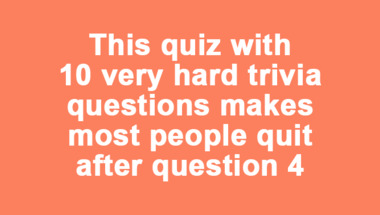
10 mixed questions

10 mixed questions

How many of them do you remember?

Tell your score in the comments!
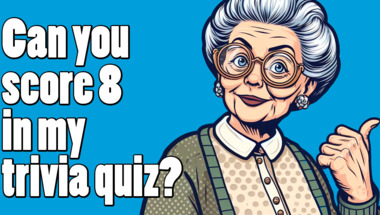
What do you think will be your performance in..

10 mixed questions

Tell us your result in the comments

10 questions
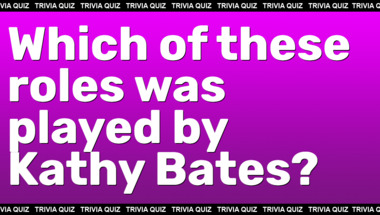
Let us know your score in the comment section
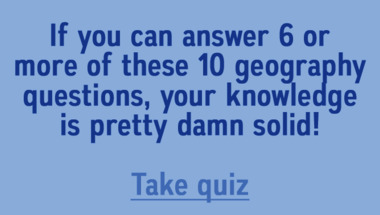
10 fun questions

10 hot questions
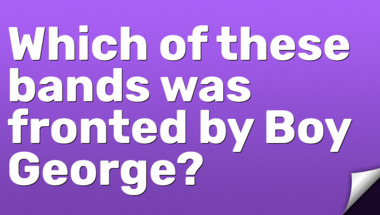
Can you score 7 or higher in this one?
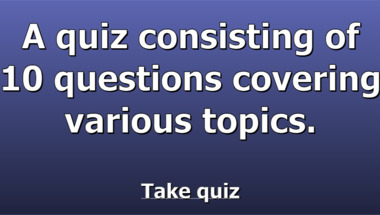
How many of them will you answer correctly?
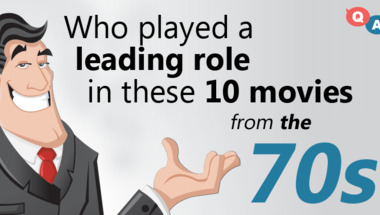
How many correct will you get?

10 Impossible Questions
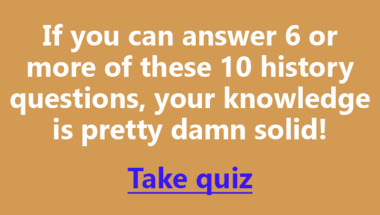
10 entertaining questions
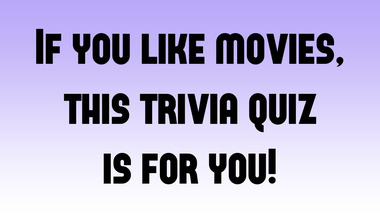
10 questions to test your knowledge
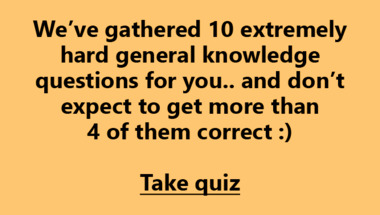
10 mixed questions

How many songs do you know?

Do you have the knowledge for this one?

Can you score 5 or higher?

Trivia is a fantastic way to learn about the past, test your knowledge, and discover fascinating facts you might never have encountered otherwise. In this article, we’ll delve deep into the background, context, and interesting details behind 10 compelling trivia questions, each rooted in significant historical events, influential personalities, and social transformations from the 1940s and 1950s. Let’s embark on this informative journey together!
1. In 1940, Italian forces in Libya began attacking British forces in Egypt in order to gain control of a strategically important canal. What is the name of the canal?
The answer to this question is the Suez Canal. The Suez Canal, which connects the Mediterranean Sea to the Red Sea, has been one of the world’s most vital waterways since its opening in 1869. It drastically shortened the distance for ships traveling between Europe and South Asia, eliminating the need to sail around Africa via the Cape of Good Hope.
During World War II, the Suez Canal was of immense strategic importance. Control over the canal meant controlling a critical supply route for oil, troops, and goods between the British colonies in Asia and the European theater. In 1940, Italian dictator Benito Mussolini ordered his troops, stationed in Libya, to attack British positions in Egypt, aiming to seize the canal. The ensuing battles, including Operation Compass, were pivotal in the North African Campaign.
Today, the Suez Canal remains a crucial artery of global commerce, and its history is deeply intertwined with the geopolitics of the 20th century.
2. Which famous scientist was born in Germany in 1879, became a Swiss citizen in 1901 and later became a US citizen in 1940?
The answer is Albert Einstein. Einstein, one of the most influential scientists of all time, was born in Ulm, in the Kingdom of Württemberg in the German Empire. His groundbreaking work in theoretical physics, most notably the development of the theory of relativity, revolutionized our understanding of space, time, and energy.
Einstein became a Swiss citizen in 1901 while working at the Swiss Patent Office in Bern. Fleeing the rise of the Nazi regime and growing antisemitism, Einstein emigrated to the United States in 1933, where he accepted a position at the Institute for Advanced Study in Princeton, New Jersey. He became a U.S. citizen in 1940, just as World War II was escalating in Europe.
Einstein’s legacy extends beyond physics—he was an outspoken advocate for civil rights, pacifism, and Zionism, and his image remains iconic in both science and popular culture.
3. In the 1940s, Germany was divided into two separate sovereign states. What were they called?
The answer is East Germany and West Germany, officially known as the German Democratic Republic (GDR) and the Federal Republic of Germany (FRG). After World War II, Germany was occupied by the Allied powers and divided into four zones controlled by the United States, the United Kingdom, France, and the Soviet Union. Tensions between the Soviet Union and the Western Allies soon escalated into the Cold War, resulting in the formal division of Germany in 1949.
West Germany (FRG) aligned with Western Europe and the United States, embracing capitalism and democracy. East Germany (GDR), under Soviet influence, adopted communism. The Berlin Wall, constructed in 1961, became the physical and ideological symbol of this division. The two Germanys remained separate until reunification in 1990, following the collapse of communist regimes across Eastern Europe.
This chapter of German history profoundly shaped the post-war world, influencing politics, economics, and culture across the globe for decades.
4. In June 1940, Benito Mussolini recklessly declared war on Britain and what other country?
The correct answer is France. By June 1940, Hitler’s forces were sweeping across Western Europe, and France was on the verge of surrender. Mussolini, the fascist dictator of Italy, saw an opportunity to join the conflict and expand Italy's influence. On June 10, 1940, Mussolini declared war on both Britain and France, hoping to seize territories and bolster Italy’s standing among the Axis powers.
Italy’s military campaigns, however, were largely unsuccessful, and Mussolini’s decision to enter the war is widely considered a strategic blunder that contributed to his eventual downfall.
5. ‘Non-violent civil disobedience’ was a form of protest utilized by whom in the 1940s?
This form of protest was most famously utilized by Mahatma Gandhi. Gandhi had been practicing and promoting non-violent resistance (known as satyagraha) for decades in the struggle against British rule in India. The 1940s marked a crucial period in the Indian independence movement, including the Quit India Movement of 1942, where mass protests, strikes, and acts of civil disobedience swept the country.
Gandhi’s philosophy inspired civil rights movements around the world, influencing leaders such as Martin Luther King Jr. and Nelson Mandela in their own struggles against injustice and oppression.
6. Which of the following Presidents served during the 1940s?
The answer is Franklin D. Roosevelt and Harry S. Truman. Franklin D. Roosevelt, often referred to as FDR, served as President of the United States from 1933 until his death in 1945. He led the country through the Great Depression and the vast majority of World War II, implementing the New Deal and establishing the United States as a global superpower.
After Roosevelt’s death in April 1945, Harry S. Truman became President. Truman presided over the final months of World War II, making the controversial decision to use atomic bombs on Hiroshima and Nagasaki, and oversaw the start of the Cold War and the reconstruction of Europe through the Marshall Plan.
7. Who was the author of the 1950 novel The Lion, the Witch and the Wardrobe?
The answer is C.S. Lewis (Clive Staples Lewis). Published in 1950, The Lion, the Witch and the Wardrobe is the first book (in publication order) of the beloved Chronicles of Narnia series. The book tells the story of four children who enter the magical land of Narnia through a wardrobe, embarking on a quest to defeat the evil White Witch with the help of the lion Aslan.
C.S. Lewis was a British writer, theologian, and academic. His works, both fictional and non-fictional, have had a profound impact on literature, Christian thought, and popular culture.
8. What was the most common job for a female in 1950 America?
The most common job for women in 1950s America was secretary (or clerical worker). The postwar period saw a significant shift in gender roles, as many women who had entered the workforce during World War II returned to more traditional roles or took up office jobs. Secretarial work became synonymous with female employment, reflecting both the opportunities and limitations faced by women in the mid-20th century workforce.
Despite being the most common occupation, secretarial work was often undervalued and underpaid, sparking future movements for gender equality and women’s rights in the workplace.
9. On what date in 1940 did the Battle of Britain begin?
The Battle of Britain began on July 10, 1940. This pivotal air campaign was waged by the German Luftwaffe against the United Kingdom in an attempt to gain air superiority and prepare for a possible invasion (Operation Sea Lion). The battle lasted until October 31, 1940, and was the first major military campaign fought entirely by air forces.
British resilience, aided by the effective use of radar and the bravery of the Royal Air Force (RAF) pilots, led to a decisive victory, marking the first major defeat of Hitler’s military forces. The phrase “Never in the field of human conflict was so much owed by so many to so few,” spoken by Winston Churchill, immortalized the sacrifice of the RAF.
10. What was the name of the September 27th, 1940 Act signed by Germany, Italy and Japan?
The answer is the Tripartite Pact. The Tripartite Pact was a military alliance signed in Berlin by Germany, Italy, and Japan, formalizing the Axis Powers during World War II. The pact stipulated that if any of the signatory powers were attacked by a country not already involved in the war, the others would come to their aid.
This alliance solidified the cooperation between the three fascist nations and escalated the global dimensions of World War II, eventually drawing in the United States after the attack on Pearl Harbor in 1941.
Conclusion
These 10 trivia questions open a window into the tumultuous and transformative decades of the 1940s and 1950s. From the battlefields of North Africa and the skies over Britain to the quiet offices of postwar America and the magical world of Narnia, history is full of stories that continue to shape our world today. Whether you’re a trivia enthusiast or a history buff, exploring the stories behind the questions offers a deeper appreciation for the past and its enduring influence on our present.